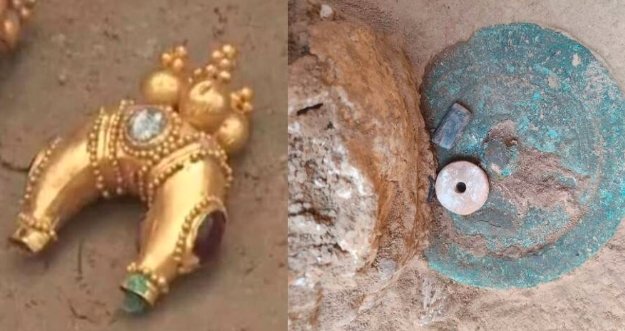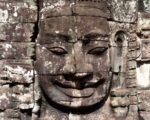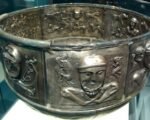The Kangju State: A Mysterious Legacy
The Kangju state, sometimes referred to as “Kanly,” existed between the fifth century BCE and the fourth century CE. Although relatively lesser-known, it played a crucial role as a major economic and cultural hub along the ancient trade routes of the Silk Road. The Kangju state was a federation of different peoples, including nomadic groups such as the Sarmatians, Xiongnu, and Saka (possibly Scythians). Its location facilitated diplomatic and trade relations with powerful empires such as Rome, Byzantium, the Kushan Empire, and .

The Unearthed Treasures
Archaeologists excavated three burial mounds at the Tolebaitobe site, revealing a wealth of artifacts:
- Bronze Mirror from China: Among the most significant finds was a bronze mirror believed to originate from China during the Han dynasty (206 BCE to 220 CE). The mirror’s circular design features an eight-sided arched pattern on the back, and it likely served both practical and symbolic purposes. This particular mirror was discovered in the grave of a high-status woman, underscoring her wealth and influence.
- Roman-Style Brooch (Fibula): The burial also contained a Roman-style brooch, known as a fibula. This ornate piece of jewelry reflects the Kangju state’s extensive trade connections and cultural exchange. Fibulae were commonly used to fasten garments and were often adorned with intricate designs.
- Polychromatic Gold Earrings: Perhaps the most stunning artifacts were two highly ornate gold earrings dating back to the first century BCE. These crescent-shaped earrings were crafted from a colorful alloy known as polychromatic gold. Adorned with turquoise and rubies, they were designed to reflect sunlight. Their intricate decorations resembled clusters of grapes, symbolizing abundance and prosperity.
The Legacy Lives On
The Kangju burial site provides a glimpse into a civilization that thrived amidst the shifting sands of time. As we marvel at these ancient treasures, we recognize the enduring legacy of the Kangju state—a legacy that transcends borders and connects us to the rich tapestry of human history.













